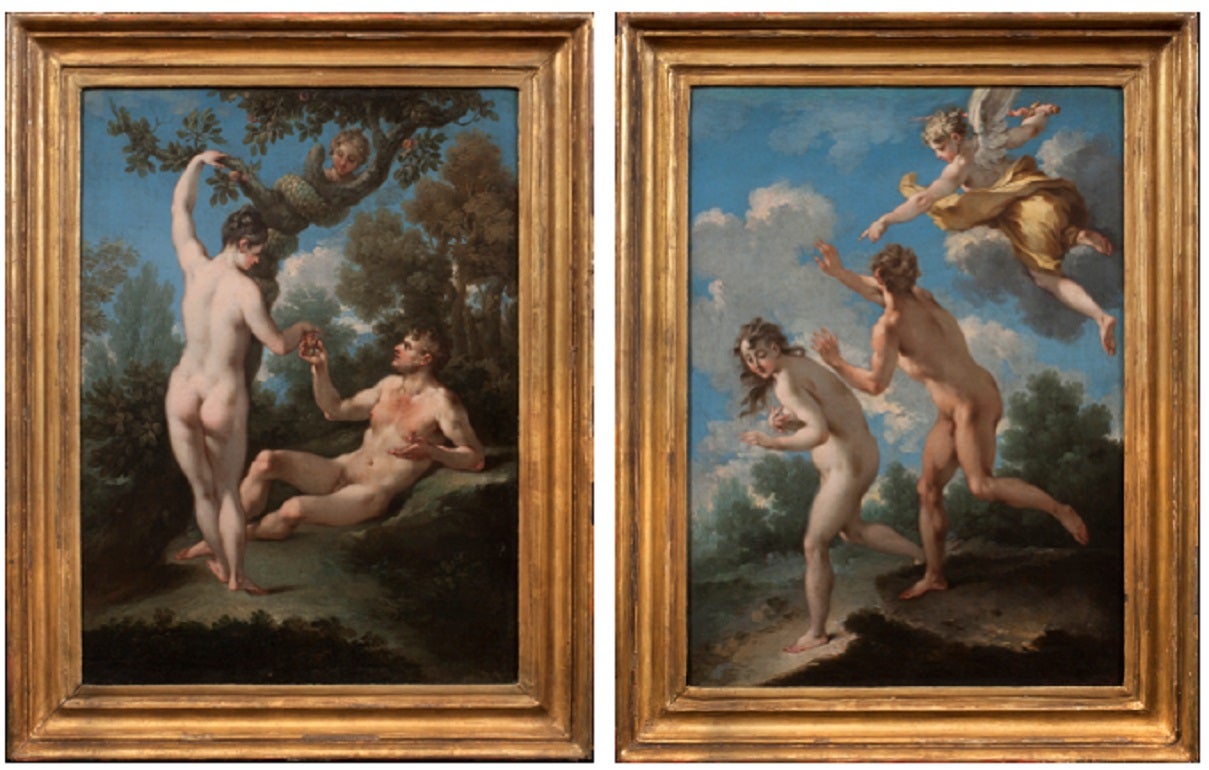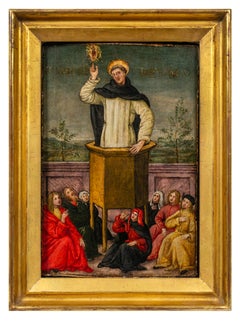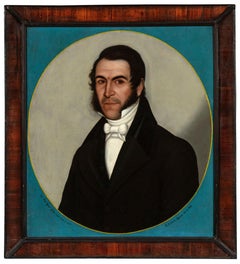Want more images or videos?
Request additional images or videos from the seller
1 of 4
Nicolas NeufchatelPortrait of a Man
$125,000List Price
About the Item
- Creator:Nicolas Neufchatel (1527-1590, Flemish)
- Dimensions:Height: 44.5 in (113.03 cm)Width: 34.5 in (87.63 cm)
- Medium:
- Movement & Style:
- Period:
- Condition:Excellent.
- Gallery Location:New York, NY
- Reference Number:1stDibs: G12061210243

About the Seller
5.0
Recognized Seller
These prestigious sellers are industry leaders and represent the highest echelon for item quality and design.
Established in 1997
1stDibs seller since 2012
24 sales on 1stDibs
Typical response time: 7 hours
Authenticity Guarantee
In the unlikely event there’s an issue with an item’s authenticity, contact us within 1 year for a full refund. DetailsMoney-Back Guarantee
If your item is not as described, is damaged in transit, or does not arrive, contact us within 7 days for a full refund. Details24-Hour Cancellation
You have a 24-hour grace period in which to reconsider your purchase, with no questions asked.Vetted Professional Sellers
Our world-class sellers must adhere to strict standards for service and quality, maintaining the integrity of our listings.Price-Match Guarantee
If you find that a seller listed the same item for a lower price elsewhere, we’ll match it.Trusted Global Delivery
Our best-in-class carrier network provides specialized shipping options worldwide, including custom delivery.You May Also Like
Copy of "Portrait of Beatrice dʼEste" by Leonardo da Vinci created 15th Century
Located in New York, NY
A masterful copy by an unknown artist, after the portrait of "Beatrice d'Este" by Leonardo Da Vinci also known as ‘Portrait of a Lady’ or ‘La Dama con la reticella di perle (The Lady With a Pearl Hairnet)’. The original work originally created in the 15th Century is currently on display in the Pinacoteca Ambrosiana Museum of Milan. Beatrice d'Este was the Duchess of Bari/Milan and was believed to be one of the most attractive princesses of the Renaissance. Her impeccable style won her many admirers throughout Italy and France, and she became a trendsetter of the highest order. This copy of the original painting, is an oil on canvas done in the 18th Century, and in this exquisite portrait, the artist has masterfully depicted the fine details with draped hair, pearls, royal dress, ornate headgear and sumptuous jewelry in front of a dark background. Once again, capturing the imagination with another enigmatic smile. It comes housed in an elegant period giltwood frame with ebonized trims and ready to be displayed with hanging wire on verso.
Art measures 28 x 18 inches
Frame measures 34.5 x 24.5 inches
There is much debate and controversy over who actually painted the "Beatrice d'Este" was it Leonardo da Vinci (1452–1519), or Giovanni Ambrogio de Predis (1455–1508). So we may never know who executed the original portrait which hangs in the museum, but that need not deter from an appreciation of its singularity. Following the portraiture convention established by painters of the Quattrocentro, the artist has chosen to portray his sitter in profile. In doing so, he magnificently captures the essence of his sitter, a girl on the threshold of womanhood. Bedecked in the adornments—silk, velvet, pearls and embroidery (brocade) crafted of spun gold threads—afforded her by birthright and marriage, Beatrice looks forward in noble serenity. And at the same time her profile with its upturned nose and slight smile betrays an innocence that must have been the basis of the oft-repeated epithet: la più zentil donna in Italia” (“the sweetest lady in Italy”).
It is believed the lady is Beatrice d'Este (1475-1497), duchess of Bari and later of Milan, the wife of Ludovico Sforza (known as "il Moro"). One of the most beautiful princesses of the Italian Renaissance, she was known for her good taste in fashion. Beatrice was a member of the Este-Sforza family, which joined by marriage two of the oldest reigning and already powerful houses in Italy. The house of Este, which held court in Ferrara, traced its lineage to the 11th century Dukes of Saxony and Bavaria. Beatriceʼs father, Ercole I ruled the Ferrara commune for 34 years, catapulting the city-state (and the Estes with it) to an unmatched level of economic prosperity and cultural prominence. The family was renowned for its love of letters and patronage of the arts.
The first time Leonardo da Vinci’s name resounded in the Ambrosiana, it was through the pen of its founder, Cardinal Federico Borromeo, who attributed this little panel to the great Master, describing it as “A portrait of a Duchess of Milan, by the hand of Leonardo”. Following the Cardinal’s statement, the portrait was for long assumed to depict Beatrice d’Este, the wife of Ludovico il Moro. However, scholars have recently been more cautious and vague in their statements, with regard to both the artist (anonymous Lombard or Emilian...
Category
18th Century Northern Renaissance Portrait Paintings
Materials
Canvas, Oil
$35,000
H 34.5 in W 24.5 in D 2.5 in
Holy Woman, after Quentin Matsys penitent Saint Magdalene master copy
Located in Norwich, GB
A stunning copy of the Northern Renaissance masterpiece "Maddalena Dolente" by Quentin Matsys (1466-1530) which is in the collection of the Gemäldegalerie Berlin. Beautifully execut...
Category
Mid-20th Century Northern Renaissance Figurative Paintings
Materials
Oil, Wood Panel
$600
H 13.39 in W 11.42 in D 1.58 in
Original abstract oil painting by prominent searchable artist Steve McElroy.
By Steve McElroy
Located in Dallas, TX
This artist's butterfly work is in the current Veranda Magazine with Jan Showers.
"Girl with the Hermes Scarf" by Steve McElroy. Oil on canvas, 22 x 28 inches, painted 2025. This ...
Category
2010s Renaissance Figurative Paintings
Materials
Canvas, Oil
$1,100
H 28 in W 22 in D 0.5 in
19th Century Young Irish Woman with Feathered Hat
Located in Soquel, CA
Mid 19th Century portrait of a young Irish woman in c. 1570s dress with ruffle. Painted in the style of William Merritt Chase. Unsigned and unframed.
Category
Mid-19th Century Renaissance Portrait Paintings
Materials
Canvas, Oil
Fine 17th C Italian Old Master Oil Painting Madonna & Infant Christ with Joseph
Located in Cirencester, Gloucestershire
The Holy Family
17th century Genoise School, unsigned as typical of the period
follower of Luca CAMBIASO
oil on canvas, unframed
canvas: 29.5 x 22 inches
inscribed verso
Provenance: ...
Category
17th Century Renaissance Figurative Paintings
Materials
Oil, Canvas
A portrait of John Poyntz, after Hans Holbein, ca. 1644 - 1674
By Hans Holbein
Located in New York, NY
A portrait of courtier and politician John Poyntz, after Hans Holbein, circa 1644 - 1674. This painting is based on a drawing by Hans Holbein, part of the drawings collection of the ...
Category
Mid-17th Century Renaissance Portrait Paintings
Materials
Oil, Wood Panel
$24,000 Sale Price
52% Off
H 12.8 in W 10.44 in
Renaissance Style Head Profile Portrait of Christ Beautiful Antique Oil Painting
Located in Cirencester, Gloucestershire
The Head of Christ
19th Century Dutch School
oil on paper laid down on board, unframed
size: 7.5 x 6 inches
private collection
The painting is in overall very good and sound condition
Category
19th Century Renaissance Figurative Paintings
Materials
Oil
Renaissance Style Italian Old Master Painting Madonna & Child Tender Embrace
Located in Cirencester, Gloucestershire
19th/ early 20th Century Italian School
unsigned
Madonna and Child
oil painting on canvas, unframed
canvas: 32 x 24 inches
provenance: private collecti...
Category
Late 19th Century Renaissance Portrait Paintings
Materials
Oil
Allegory of Music Ste Cecilia School After Lorenzo Lippi
Located in Pasadena, CA
The painting is about the Florentine school and a seventeenth-century Italian school. Oil on canvas
After Lorenzo Lippi (1606–1665) who was a prominent Florentine Baroque painter a...
Category
17th Century Renaissance Figurative Paintings
Materials
Oil
Allegory of Music School After Lorenzo Lippi
Located in Pasadena, CA
After Lorenzo Lippi (Florence, May 6, 1606 - Florence, April 15, 1665) is a Baroque painter of the Florentine school and a seventeenth-century Italian poet.
Category
17th Century Renaissance Figurative Paintings
Materials
Oil
$24,000 Sale Price
20% Off
H 24.41 in W 31.5 in D 1.97 in
More From This Seller
View AllSt. Vincent Ferrer Preaching to the People of Salamanca
Located in New York, NY
Provenance:
Private Collection, New Jersey
The present painting depicts Saint Vincent Ferrer preaching from a raised pulpit to a group of seven peopl...
Category
15th Century and Earlier Renaissance Figurative Paintings
Materials
Oil, Wood Panel
Portrait of Dr. Juan Ignacio Galves
Located in New York, NY
Signed and dated, along the bottom of the oval:
Dõr. Juan Ygnacio Galves nació el año de 1797. / Por J. Celestino Figueroa año de 1841.
Provenance: Luis Alberto Acuña (1904–1994), ...
Category
1840s Portrait Paintings
Materials
Canvas, Oil
Madonna and Child with Angels in the Clouds
Located in New York, NY
Provenance: Charles H. and Virginia Baldwin, Claremont, Colorado Springs, Colorado ca. 1907-1934; thence by descent until sold in 1949 to:
Charles Blevins Davis, Claremont (renamed Trianon), Colorado Springs 1949 -until gifted in 1952 to:
The Poor Sisters of Saint Francis, Trianon, Colorado Springs, 1952 until acquired, 1960, by:
John W. Metzger, Trianon, renamed as the Trianon School of Fine Arts, Colorado Springs, 1960-1967; when transferred to:
The Metzger Family Foundation, Trianon Art Museum, Denver, 1967 - 2004; thence by descent in the Metzger Family until 2015
Exhibited: Trianon Art Museum, Denver (until 2004)
The present work is a spectacular jewel-like canvas by Amigoni, rich in delicate pastel colors, most likely a modello for an altarpiece either lost or never painted. In it the Madonna stands firmly upon a cloud in the heavens, her Child resting on a delicate veil further supported by a cloud, as he gently wraps his arm around his mother’s neck. From above angels prepare to lower flowers and a wreath, while other angels and seraphim surrounding the two joyfully cavort.
Dr. Annalisa Scarpa, author of the forthcoming monograph on Jacopo Amigoni...
Category
18th Century and Earlier Figurative Paintings
Materials
Canvas, Oil
Portrait of a Boy with a Squirrel
Located in New York, NY
Provenance: Lewis J. Ruskin, Arizona, 1958–1981; thence by descent to the present owner.
This charming portrait of a young boy with his pet squirrel is a newly-discovered work by G...
Category
Mid-19th Century Portrait Paintings
Materials
Canvas, Oil
Saint Martin de Porres
Located in New York, NY
Provenance: Private Collection, New York, until 2022.
Martín de Porres was born in Lima in 1579, the illegitimate son of a Spanish-American father, J...
Category
Late 18th Century Paintings
Materials
Canvas, Oil
Head of a Classical Poet (Socrates?)
By Pier Francesco Mola
Located in New York, NY
Provenance:
Possibly Antonio Amici Moretti, Rome, 1690
Roy Clyde Gardner, Union, Mississippi, 1970s until 2004; by whom given to:
Mississippi Band of Choctaw Indians, 2004-2010
Lit...
Category
17th Century Baroque Paintings
Materials
Canvas, Oil



